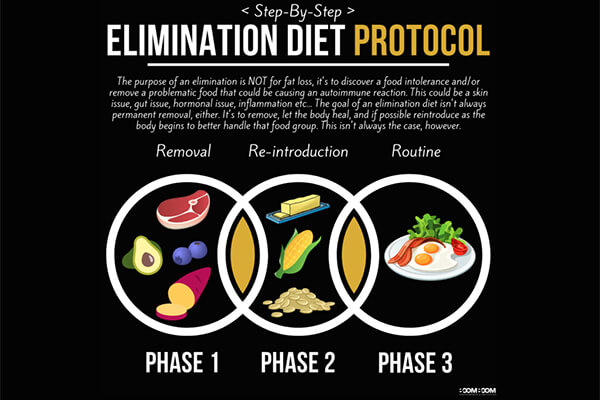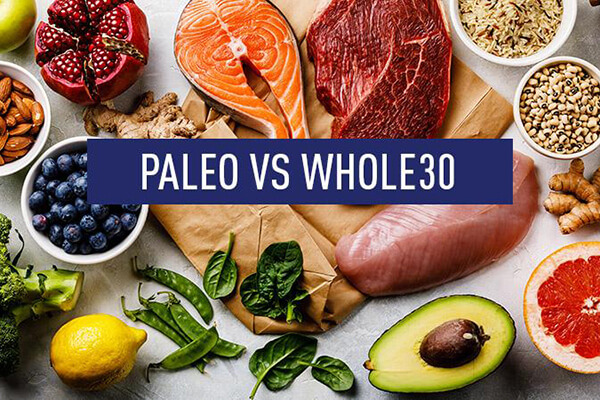Whole30 vs Elimination Diet

d To begin with, whole30 is an elimination diet. Elimination diets are increasingly becoming popular, and whole30 is one of the most popular among them all. However, these diets are not new, as they have been around for a very long time. They are only being re-popularized and rebranded with different names such as Whole30.
There is a reason why many people turn to elimination diets to help them feel better. Many doctors also recommend them because of the vast benefits they offer. Elimination diets provide a wide range of benefits. However, one of the most significant benefits they offer is helping individuals to uncover food intolerance and food-related health issues.
Why Elimination Diets Are created
There is a common misconception about elimination diets, which is the fact that they are designed to help people lose weight. Elimination diets are not weight-loss diets. Nevertheless, you might end up shedding some pounds during and after the diet, which is common amongst many people, but that does not mean they are strictly weight-loss diets.
Elimination diets are designed to eliminate certain foods or food groups from your diet that are often linked to food allergies or other health issues like migraines, fatigue, or autoimmune disease. A doctor created elimination diets back in 1926 to help uncover food allergies in patients. It is almost a century since they were created, and they are still considered the number one solution for identifying food allergies, food sensitivities or intolerance, and more. They also help to solve other food-related health problems.
Elimination diets have different approaches. Many health care professionals also have different guidelines that you need to follow. Today, there is a long list of the different kinds of elimination diets out there such as the Whole30, keto and paleo diets. These different elimination diets have different approaches, rules, and philosophies.
Common Foods Groups Eliminated In Elimination Diets

Here are some of the food groups that you would have to stop eating during an elimination diet:
-
Dairy:
Dairy is one of the common food groups that elimination diets cut out. You would have to eliminate all forms of dairy from your diet including ice cream, yogurt, cheese, milk, and more. -
Soy:
Soy is also not allowed when on an elimination diet. You have to forfeit all forms of soy from your diet including soy lecithin, tofu, tempeh, edamame, soy sauce, soybeans, and more. -
Gluten:
Gluten is another common food group that elimination diets cut out. This means you will not eat pasta, pastries, wheat, bread that contain wheat, and more. -
Added Sugar:
Added sugars are eliminated from many eliminated diets. You have to refrain from all forms of added or refined sugar such as high-fructose corn syrup. -
Nightshades:
Some elimination diets eliminate food such as tomatoes, potatoes, eggplants, and bell pepper. - Corn and products made from corn such as corn syrup, cornmeal, or grits.
- Eggs are not allowed in some elimination diets. However, many elimination diets approve of eggs.
-
Alcohol:
Alcohol is also restricted in many diets. Just a few elimination diets allow for alcohol consumption (in moderation though).
Many elimination diets avoid these foods or food groups because you might have an intolerance for them or they are a common food allergen. Some of these foods might be causing issues such as bloating, migraines, or nausea, but you might not know which food, in particular, is causing the issues. Most times, many people do not even know that they are experiencing those health issues because of the food they eat.
The food we eat has a significant impact on our overall health and wellbeing. This is why many practitioners recommend eating healthy if we want to stay healthy. Most of these elimination diets aim to enhance our eating habits and make us eat only whole, natural, and healthy foods.
The list contains many foods, including junk foods, processed foods, and baked goods (for some elimination diets such as whole30). However, the eliminated foods are not a form of punishment. You would not be bidding farewell to those foods forever; it is just for a limited period.
The idea of the diet is to keep you away from those foods for a little while. After the duration, depending on the elimination diet, you would have to reintroduce those eliminated foods gradually. The gradual reintroduction of those foods will help you determine which is good for your body and which is not. This will help you to uncover potential triggers that are causing problems in your body.
How Elimination Diets Work

When you begin this journey, you will eliminate all potentially problematic foods from your diet for a month or couple of weeks, depending on the elimination diet you choose to follow. However, before you embark on this journey, you need to consult your doctor or nutritionist first. Your nutritionist or doctor might even recommend the best elimination diet for you based on your needs and health condition.
The first stage of the elimination diet involves cutting out the foods and food groups that are not accepted in the program. For most elimination diets, the second phase is known as the reintroduction phase. This is the stage where you need to reintroduce the eliminated foods back to your diet slowly, one at a time. At this stage, you would be able to discover any allergy, but you have to be patient when reintroducing those foods.
If you decide to jump right back to the eliminated foods all at once, you will not be able to determine the exact culprit. If your body reacts to a specific food, it means your body is sensitive or intolerant of that food. Once you discover that food, you can eliminate it from your diet completely or work with your nutritionist or doctors to create a better eating plan for you.
Whole30 Diet

The Whole30 diet is also an elimination diet; one of the most popular types of elimination diets out there. This elimination diet is designed to help reset your eating habit, health, and relationship with food. The program lasts for 30 days, and you are to eat only whole, natural, and unprocessed foods for the duration of the program.
Whole30 also involves eliminating diets that clinical experience and scientific literature have shown to be problematic in several areas such as inflammation, immune system, digestion, eating habits and cravings, and hormones and blood sugar regulation.
This program provides many great health benefits. It is also very popular because it promotes healthy eating, including eating whole foods. If you have any severe health issues, this program can help you discover how your body responds to certain foods
Many people also run to this elimination diet because it helps with weight loss. Whole30 is not a weight-loss diet, but many who have completed this challenge experienced significant weight loss. Other great benefits it offers include improvements in sleep, energy, digestion, athletic performance, focus, pain, and more. It can also reduce some health issues such as migraines, eczema, allergies, and asthma.
After the 30 days, you will gradually reintroduce those eliminated foods, one at a time. You can also refer to Whole30 as a nutritional program. The program does not involve portion control, exercise, macronutrient or calorie counting, and more. It also has its unique list of foods to eat and those to avoid.
Foods Not Allowed on Whole30
- Added sugar, artificial or rea such as Splenda, coconut sugar, agave, maple syrup, and more
- No grains including oats, bulgur, corn, rye, and wheat
- Legumes including soy, peanut butter, lentils, chickpea, peanut, and peas
- No tobacco or alcohol
- Dairies such as sheep or goat milk, yogurt, kefir, cream, and cheese
- Baked goods
- Processed additives such as sulfites, MSG, and carrageenan
Foods That Are Allowed in Whole30
- Eggs
- Fish
- Chicken
- Vegetables, including starchy vegetables such as potatoes
- Fresh, whole foods such as fruits
- Fruits including bananas, oranges, apples, watermelon, berries, and more
- Healthy fats such as olive oil and avocado oil
- Nuts and seeds
- Seafood such as mussels, shrimp, and oysters
- Herbs, seasoning, and spices
Whole 30 vs Elimination Diet: What Is the Difference

There is practically not much difference between Whole30 and elimination diet, as whole30 is essentially an elimination diet. See whole30 as a subset of the elimination diets, as it is a different type of elimination diet. They have the same fundamental rules, which is to eliminate foods that are potentially causing more harm than good in your body.
AnThey eliminate grains, legumes, dairy, processed foods, alcohol, and more. They promote healthy eating, mostly whole and cooked foods. They both involve the reintroduction of foods after the duration of the program.
Conclusion
Elimination diets have been around for a very long time. Many people just started going back to them recently, and they are increasingly becoming popular. They provide a wide variety of health benefits, with weight loss being one of the most common reasons why many people embark on the journey. There are different types of elimination diets, with Whole30 being one of the most common. Whole30 is an elimination diet with its own rules, guidelines, and approach.






